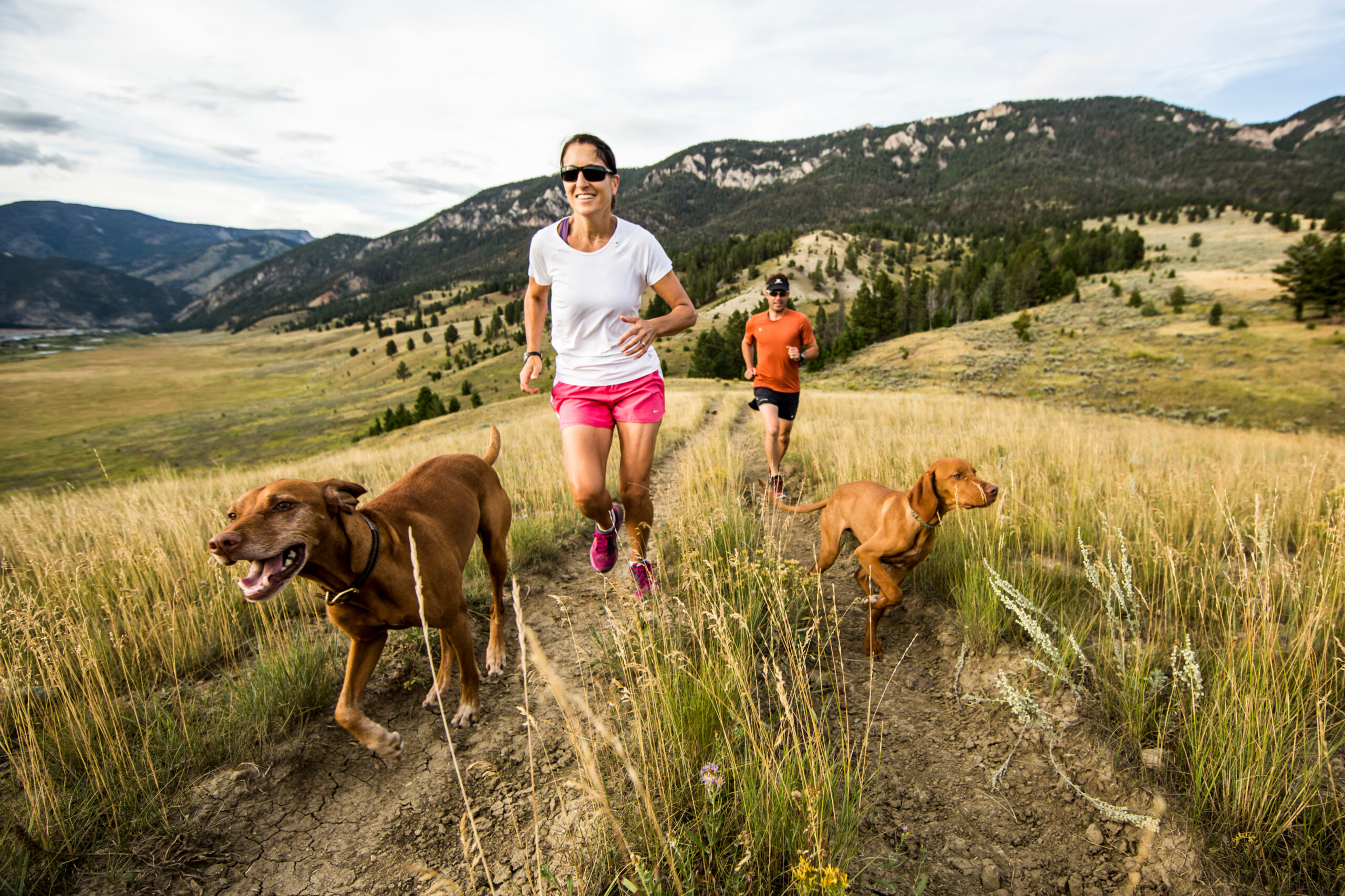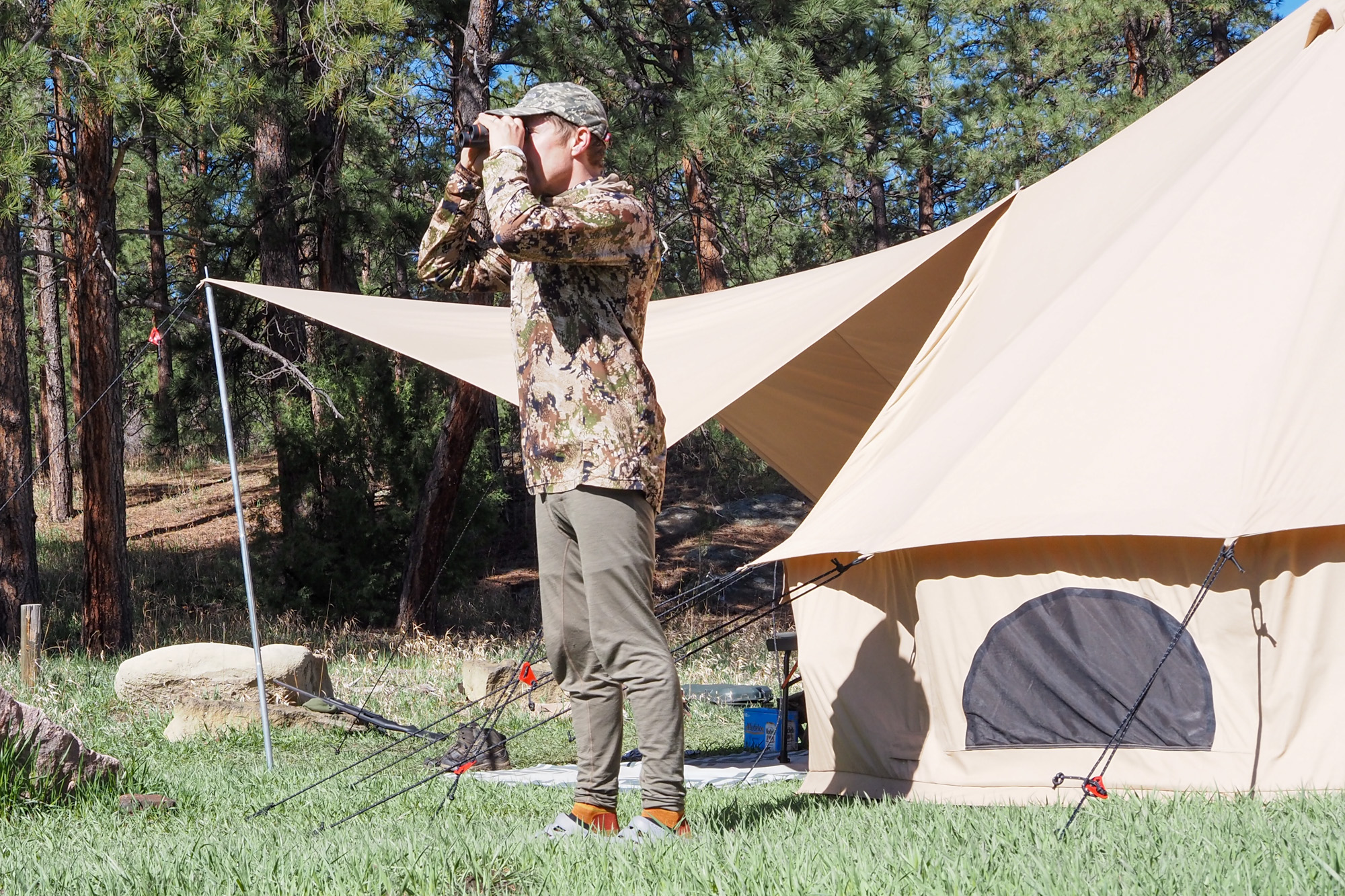National Heat Awareness Day was May 26 this year. Yes, it’s a real thing. Think of it as an annual reminder to recognize the early signs of overheating in your dog — and know what steps to take before it gets more severe.
In short, exertional heat-related illnesses (HRIs) can occur when your dog’s body generates more heat than it can dissipate. A dog left in a hot car is probably the scenario that draws the most attention to HRIs. But exertional heat stress is more subtle and covered less.
Hard efforts like running, hiking, or playing fetch on a hot day raise the risk of exertional heat stress for your dog. Depending on the conditions and your dog, a short walk or hike could also put them at risk.
This is something to especially watch out for in the spring and summer, as dogs — and their owners — tend to resume more vigorous outdoor activities. No different than a human on a couch-to-5K training plan, your dog needs to work up to playing or working hard in heat and humidity.
Eukanuba, a dog food company specializing in performance nutrition for active dogs, wants to raise awareness of exertional HRI through education and helpful preventative tips.
Learn More at Eukanuba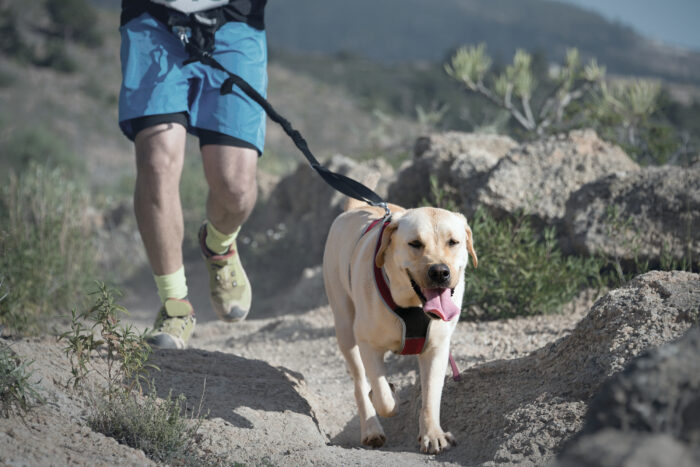
Heat-Related Illnesses
There are three stages of HRI: heat stress, heat exhaustion, and heat stroke. The cause can be overexertion or being sedentary in high temperatures without shade or ventilation.
Overheating occurs when a dog’s body temperature significantly exceeds the accepted normal temperature range of a healthy dog. The tricky part is that, because you’re probably not regularly checking your dog’s temperature, you must instead rely on preventative strategies in addition to recognizing the signs of overheating.
Here are some helpful preventative steps you can take to ready your dog for hard work or play outdoors. You’ll want to ease them into running in hot and humid conditions.
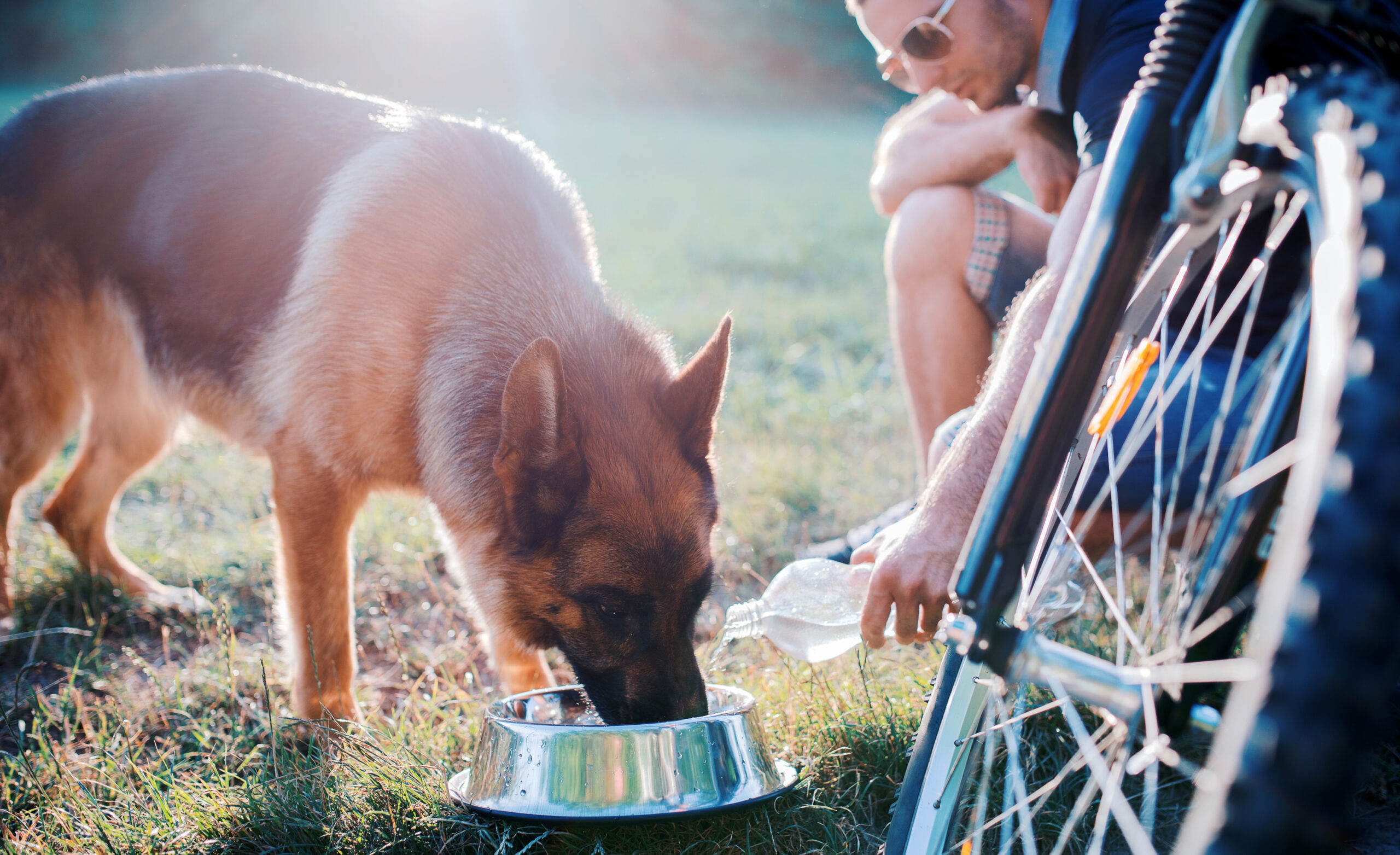
Water Down
Hydration can help set the stage for more exertion. A 44-pound dog’s daily water loss can range from a half gallon to 1.5 gallons, so they need to drink at least that much to recover.
Eukanuba recommends an increase in water three to five days prior to increased activities.
Some dogs will drink more water if there are more bowls — or other sources, such as a fountain — to drink from. Prompts like drinking out of a hose or your hand can entice dogs to drink more too.
Other dogs may require a bit of trickery. Adding water to dry kibble right before serving it is a popular way to sneak in a little extra water into their diet. There’s also water baiting, which is adding a tablespoon of wet dog food to a water bowl. Your dog should lap up water trying to get to the food.
One general guideline is for dogs to drink three times more water than the amount of dry kibble they eat each day.
Ramp Up Activity
Spring weather is often inconsistent and prone to big temperature swings. Allow your dog to adapt to warmer temperatures by avoiding higher midday temperatures.
If your dog still hasn’t shed a thicker undercoat from winter, use that as a cue for seasonal activity. When your dog starts shedding, you can help by brushing them more often to assist in the process.
Lastly, again, ease into things. Your dog may want to take breaks more often to cool down. Stopping for short breaks, preferably in the shade, and hydrating during activities can help your dog keep their core temperature down.
Signs of Overheating
Under normal conditions, dogs dissipate 70% of body heat through their skin. When outdoor temps and humidity rise closer to their body temperatures, panting becomes the main method for cooling. Panting exchanges hot air for cooler air, so panting can stop relieving your pup once outdoor heat matches their body temp.
The best way to help your dog cool off is to make the process of heat exchange easier, like taking them into air-conditioned spaces and providing fresh, clean water. Getting them wet and blowing a fan across their body helps too.
Important note: Do not put your dog in cold water or hold ice to their skin. The extreme cold can trigger your dog’s surface blood vessels to shrink and thus increase the symptoms of dehydration and heatstroke.
Here are short rundowns on the three progressive stages of HRI and steps to take if your dog shows signs of them.
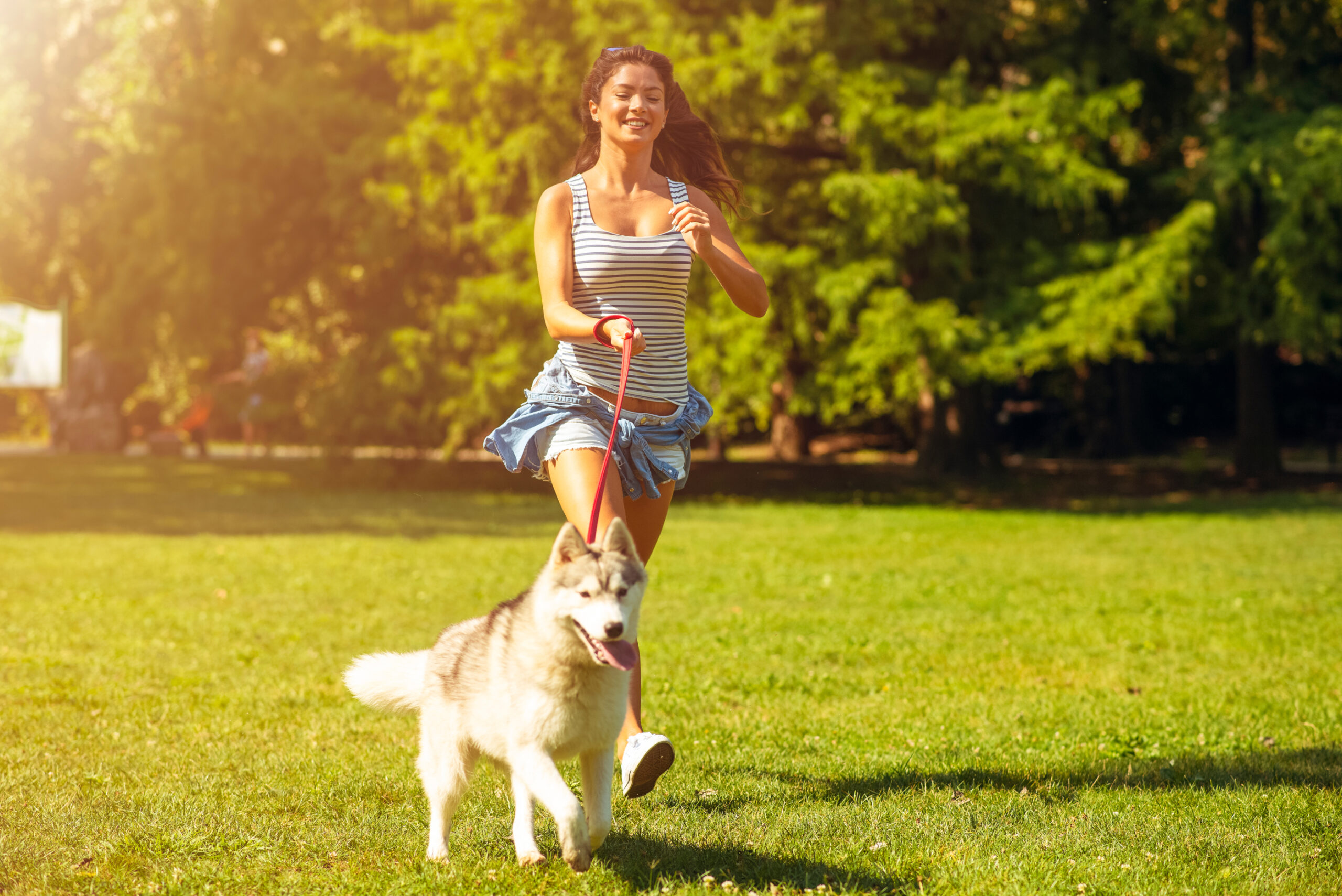
Heat Stress
The early signs of heat stress include increased thirst, excessive panting, and a flat tongue. That’s when it’s time to take a break and even wet your dog’s paws and belly with water. This can allow for simple convection to make the air cooler.
More advanced signs of heat stress include a lack of focus or slower response. Dogs can also exhibit pasty saliva and pull back their cheeks farther to show molars.
At this stage, you want to cease activity, rinse their mouth, and check their temperature. If elevated, you can rub alcohol on their ears, armpits, and groin to help them release more body heat. If symptoms persist, contact a vet.
Heat Exhaustion
Dogs tend to show a lack of motor skills when suffering from heat exhaustion. Other symptoms include sunken eyes and a dry mouth, gums, or nose. At this stage, you can lie the dog down on its side with a wet towel on top and a fan blowing across it.
More advanced signs of heat exhaustion include vomiting or diarrhea, muscle tremors, and uncontrollable panting. Should any of these symptoms occur, you should get your dog to the vet asap.
Heat Stroke
If your dog becomes unresponsive or seems confused, these are signs of heat stroke. Dark urine or a lack of urine are other common symptoms. Heat stroke comes with serious side effects that can cause dogs to collapse, have seizures, or fall into a coma.
As with heat exhaustion, you can alleviate some symptoms with a wet towel on your dog’s side with a fan blowing across it. However — get them to a vet immediately.
Stay Safe
If it’s hot for you, it’s probably hotter for your dog.
Whether you’re training or playing, be sure to allow your dog to adapt to increased activity outside this spring. Take extra steps to hydrate your pet and be mindful of high temperatures and humidity in the forecast.
Ideally, National Heat Awareness Day is just a yearly reminder to ease into an increase in work or play. We hope your dog never needs emergency care. But knowing the signs of HRI and what to do if you spot them can help you keep your pet safe and healthy as the temperatures rise.
See More Tips on Heat-Related Illnesses from Eukanuba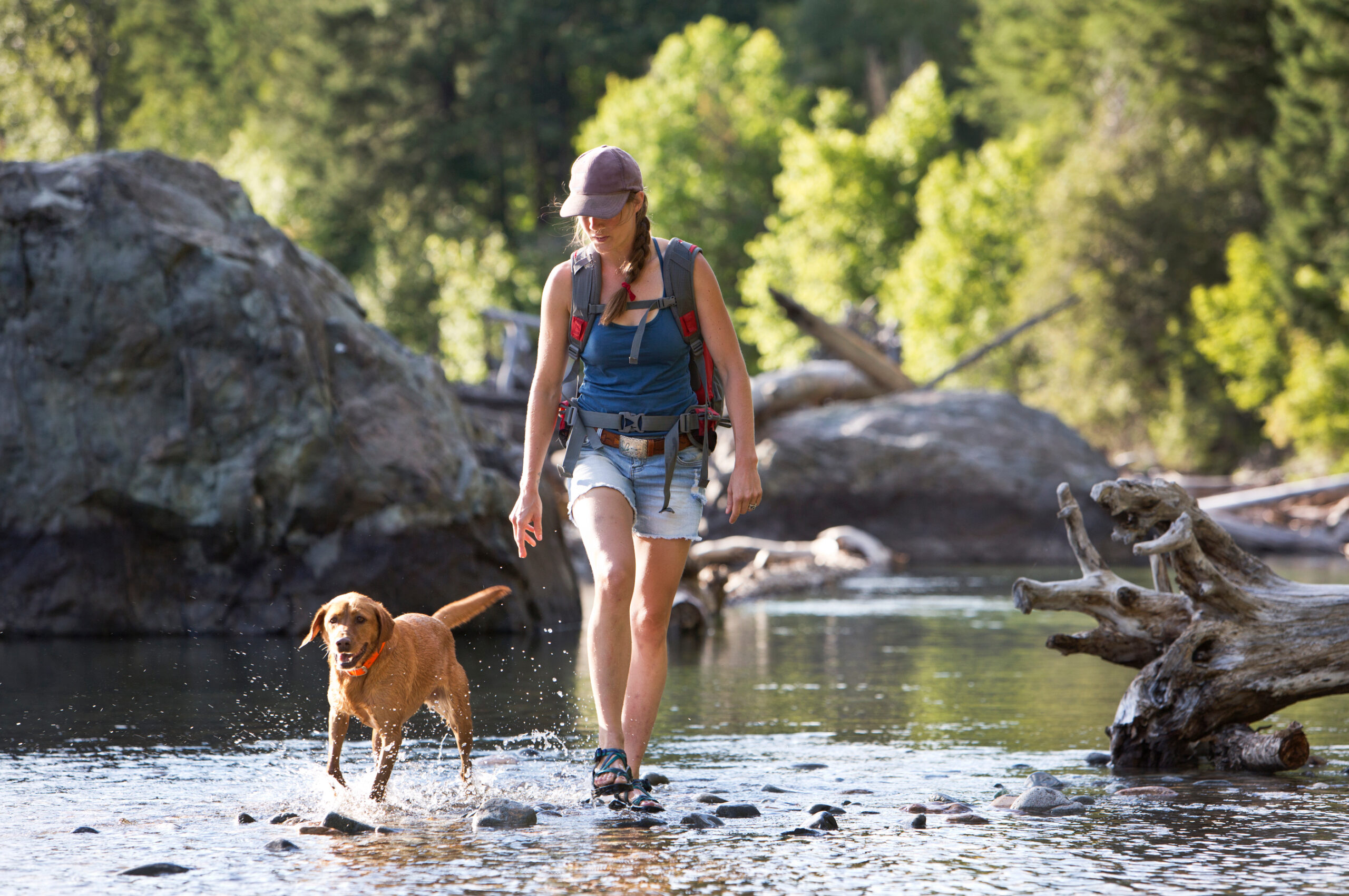
This article is sponsored by Eukanuba. Learn more about heat-related illnesses and the brand’s variety of performance dog foods.
